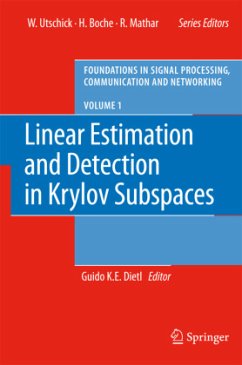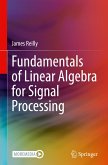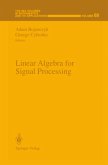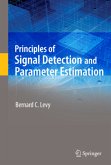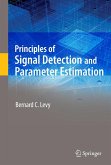One major area in the theory of statistical signal processing is reduced-rank - timation where optimal linear estimators are approximated in low-dimensional subspaces, e.g., in order to reduce the noise in overmodeled problems, - hance the performance in case of estimated statistics, and/or save compu- tional complexity in the design of the estimator which requires the solution of linear equation systems. This book provides a comprehensive overview over reduced-rank ?lters where the main emphasis is put on matrix-valued ?lters whose design requires the solution of linear systems with multiple right-hand sides. In particular, the multistage matrix Wiener ?lter, i.e., a reduced-rank Wiener ?lter based on the multistage decomposition, is derived in its most general form. In numerical mathematics, iterative block Krylov methods are very po- lar techniques for solving systems of linear equations with multiple right-hand sides, especially if the systems are large and sparse. Besides presenting a - tailed overview of the most important block Krylov methods in Chapter 3, which may also serve as an introduction to the topic, their connection to the multistage matrix Wiener ?lter is revealed in this book. Especially, the reader will learn the restrictions of the multistage matrix Wiener ?lter which are necessary in order to end up in a block Krylov method. This relationship is of great theoretical importance because it connects two di?erent ?elds of mathematics, viz., statistical signal processing and numerical linear algebra.
Bitte wählen Sie Ihr Anliegen aus.
Rechnungen
Retourenschein anfordern
Bestellstatus
Storno

